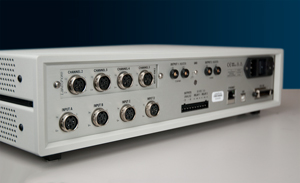The US Department of Energy has announced that a team led by Ames Laboratory in Ames, Iowa, has been selected for an award of up to $120 million over five years to establish an Energy Innovation Hub that will develop solutions to the domestic shortages of rare earth metals and other materials critical for US energy security. The new research center, which will be named the Critical Materials Institute (CMI), will bring together leading researchers from academia, four Department of Energy national laboratories, as well as the private sector.
“Rare earth metals and other critical materials are essential to manufacturing wind turbines, electric vehicles, advanced batteries and a host of other products that are essential to America’s energy and national security. The Critical Materials Institute will bring together the best and brightest research minds from universities, national laboratories and the private sector to find innovative technology solutions that will help us avoid a supply shortage that would threaten our clean energy industry as well as our security interests,” said David Danielson, Assistant Secretary for Energy Efficiency and Renewable Energy.
“The Ames Lab is the nation’s premier research center for rare earth materials’ science and technology. In responding to DOE’s call for proposals, Ames assembled a team that offers broad capabilities covering the full spectrum of critical materials research and development, from mining to separations, alloy formulations, component and systems development, and materials recycling. This team will enable the United States to continue as a global leader in research and development in diverse technologies such as communications, control systems and advanced energy systems,” said US Senator Tom Harkin.
The new Hub will focus on technologies that will enable us to make better use of the materials we have access to as well as eliminate the need for materials that are subject to supply disruptions.
These critical materials, including many rare earth elements, are essential for American competitiveness in the clean energy industry. Many materials deemed critical by the Department are used in modern clean energy technologies – such as wind turbines, solar panels, electric vehicles, and energy-efficient lighting. The Department’s 2011 Critical Materials Strategy reported that supply challenges for five rare earth metals (dysprosium, terbium, europium, neodymium and yttrium) may affect clean energy technology deployment in the coming years. In recent years, DOE and others have scaled up work to address these challenges. Among the recent investments, DOE’s Advanced Research Projects Agency – Energy and Office of Energy Efficiency and Renewable Energy have supported more than $40 million in magnet, motor and generator research.
CMI will leverage these existing research programs into a larger, coordinated effort designed to eliminate materials criticality as an impediment to the commercialization of clean energy technologies. The Hub will address challenges across the entire life cycle of these materials. This ranges from enabling new sources; improving the economics of existing sources; accelerating material development and deployment; more efficient use in manufacturing; recycling and reuse; and developing strategies to assess and address the life cycles of new materials. Cross-cutting research, including developing computational tools and supply chain and economic analyses, will also be necessary to support the basic science needs across all challenge areas.
CMI, headquartered at Ames Laboratory, will be directed by Alex King, currently the director of Ames Lab. The Hub will bring together some of the most advanced critical material research programs in the US today. Other national labs partnering with Ames include Idaho National Laboratory, Lawrence Livermore National Laboratory, and Oak Ridge National Laboratory. University and research partners include Brown University, the Colorado School of Mines, Purdue University, Rutgers University, University of California-Davis, Iowa State University, and Florida Industrial and Phosphate Research Institute. Industry partners that have joined to help advance CMI developed technologies include General Electric; OLI Systems, Inc.; SpinTek Filtration, Inc.; Advanced Recovery; Cytec, Inc.; Molycorp, Inc.; and Simbol Materials.
“The CMI has built the right team, management, and technical plan and is ready to pursue its mission to eliminate the criticality of materials as a barrier to adopting clean energy technologies,” King said.
Selected through an open national competition with a rigorous merit review process that relied on outside expert reviewers, CMI is the fifth Energy Innovation Hub established by the Energy Department since 2010. Other Hubs are devoted to modeling and simulation of nuclear reactors, achieving major improvements in the energy efficiency of buildings, developing fuels from sunlight, and advancing the next-generation of batteries and energy storage technology.
Energy Innovation Hubs are major integrated research centers with researchers from many different institutions and technical backgrounds that combine basic and applied research with engineering to accelerate scientific discovery in critical energy areas. They are modeled after the strong scientific management characteristics of the Manhattan Project, Lincoln Lab at MIT that developed radar, AT&T Bell Laboratories that developed the transistor and, more recently, the highly successful Bioenergy Research Centers established during the Bush Administration to pioneer advanced techniques in biotechnology, including biofuels.
Find more information on the Critical Material Institute HERE.



